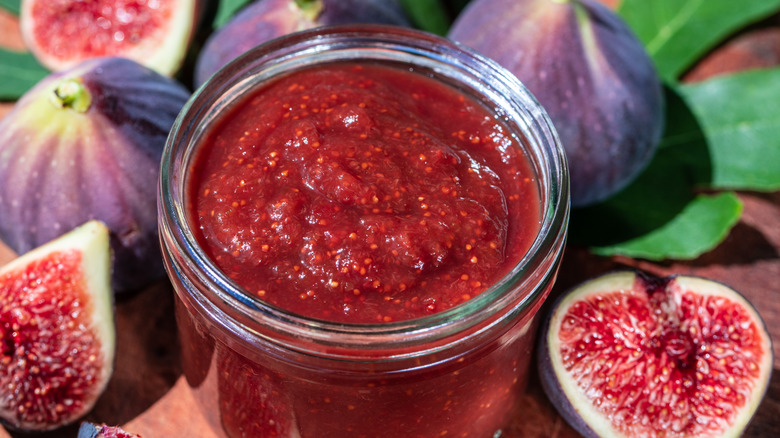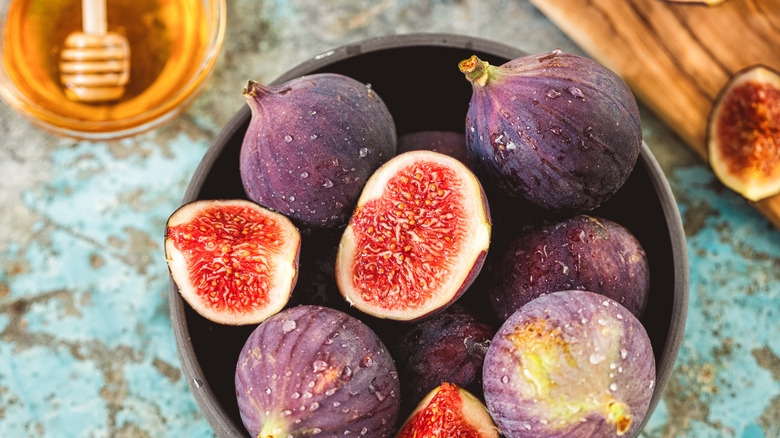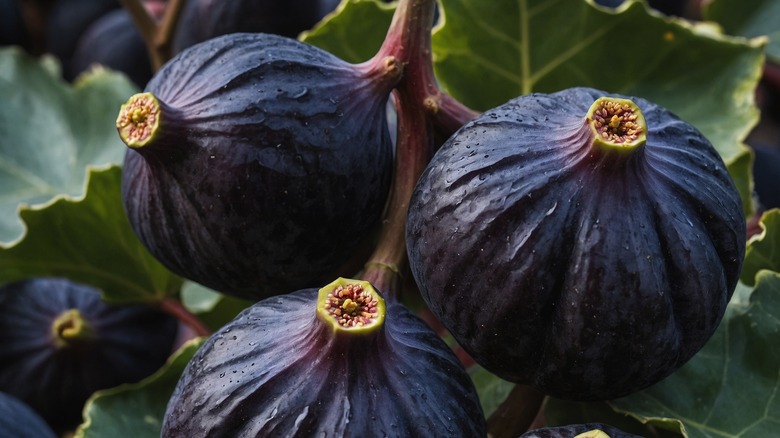When It Comes To Making Fig Spread, Skip The Dried Fruit
What could be more tantalizing than a thick layer of super sweet fig jam to accompany cheese and crackers on a charcuterie board or with nut butter for a fancy PB&J? But making fig jam can be a bit time-consuming. If you use dried figs, they need to be soaked in boiling water before adding the sugar and lemon juice — the flavor isn't as fresh as the delicious, light, newly harvested fig. Fortunately, you can use fresh figs in your jam as an easy alternative to the dried counterpart.
Fresh figs are a delicate fruit, requiring a bit of preparation to make jam with them — though many would argue that the process isn't as time-consuming as soaking dried figs for jam. It's imperative to choose the right type of fig for the job. Did you know that figs come in different varieties? Some are best for snacking on raw, such as the lighter-colored Adriatic fig. For jamming, darker figs work best because they have a lusher, richer flavor. The classic black mission fig is perfect for jams, but other varieties can be used, too, like the deep purple conadria fig. Its interior is jeweled, bright red like a pomegranate, and well-suited to making jams and spreads. The Portuguese fig also makes a delectable jam. Whatever fig you choose, making fig spread is an easy endeavor and sure to please everyone in your family.
Taste the difference
For the best results, use figs that are just ripe. Overripe figs will make your spread mushy, whereas the perfect fig has a delectably soft texture. On the other hand, underripe figs won't cook properly, turning your jam into a leathery mess. Fresh figs are not gritty and tough like dried ones are. Choose fruit that is soft to the touch but not mushy, with the texture of a ripe apricot or peach. And be sure to store your figs properly, or they'll go south before you can use them.
Fresh figs have a different flavor profile than dried; they taste fruitier and slightly less sweet, which is perfect because the fig's honey-like flavor only intensifies during the cooking process. If you've ever bitten into a Fig Newton, you know that caramelized figs are quite possibly the sugariest, most delicious fruit known to humans, but you can have too much of a good thing. Considering that you'll need to add sugar to fig spread recipes, fresh figs are the way to go for a lighter taste.
Handle with care
The next step in your canning adventure is preparing the jars while avoiding common mistakes. Once your figs and jars are ready, it's time to get cooking. First, chop the figs into small cubes. Try using a ratio of about two cups of sugar to two to three pounds of fresh figs, depending on your own personal taste. Use the zest of one lemon and a couple of tablespoons of lemon juice, which adds flavor and prevents spoiling. Sprinkle in a bit of salt and bring to a simmer. Cook uncovered while pressing the figs into the side of the pan to break up the chunks.
As a side benefit of making jam, enjoy the fruity aroma wafting through your kitchen. Simmer on low heat for approximately 40-50 minutes or until the mixture is soft. Then, add one teaspoon of almond extract for a classy spin on the traditional vanilla. The result? Possibly the best fig jam you could make.


